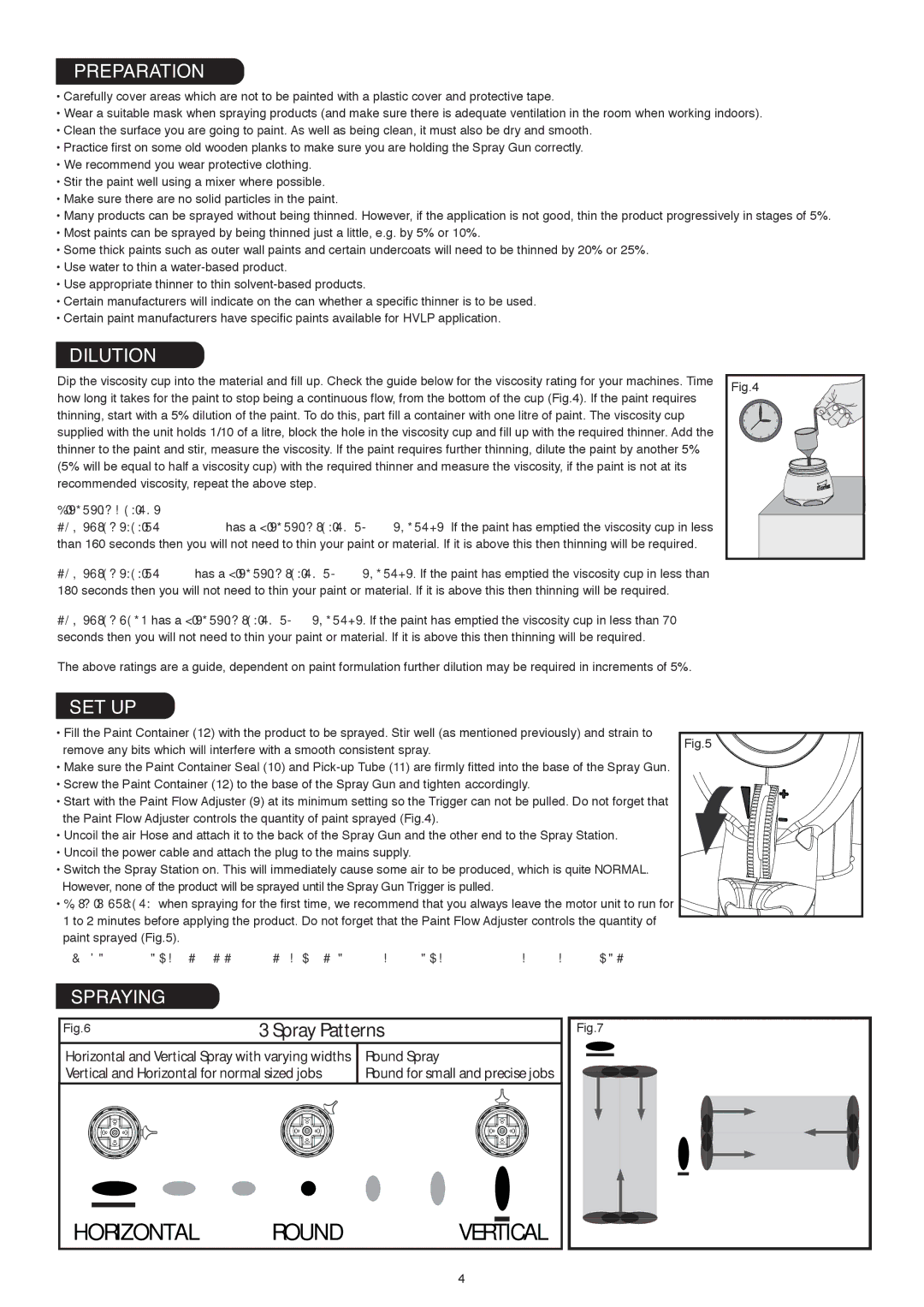HV3900, HV3500, HV2900 specifications
The Earlex HV2900, HV3500, and HV3900 are a range of high-performance spray painting systems designed for professional painters, DIY enthusiasts, and hobbyists alike. Each model offers unique features, technologies, and characteristics, catering to a variety of spraying needs and project requirements.Starting with the HV2900, this model is lightweight and compact, making it an ideal choice for small to medium projects. The HV2900 uses a high-velocity air (HV) system, which atomizes paint effectively, allowing for a smooth and even finish. This system is particularly suitable for painting furniture, cabinets, and detailed woodwork. With a 650-watt motor, it provides ample power for a variety of coatings, including water-based and oil-based paints. The adjustable spray pattern and fluid control allow users to customize their application, ensuring maximum versatility.
Moving on to the HV3500, this model offers improved performance characteristics with a more powerful 900-watt motor. The enhanced airflow allows for quicker project completion and the capability to handle larger areas with ease. The HV3500 features a larger fluid reservoir, accommodating extended spraying sessions without frequent refills. This model is perfect for both interior and exterior applications, suitable for projects like fences, decks, and garage doors. The dual-stage turbine technology ensures that the paint is atomized more efficiently, resulting in a fine mist that adheres well to surfaces.
Finally, the HV3900 stands out with its advanced features and increased power output at 1300 watts. Designed for professional use, the HV3900 offers a combination of speed and precision. It includes a three-stage turbine for enhanced control and better atomization, making it suitable for a wide range of coatings, from thick latex paints to stain and varnish. The HV3900 also boasts an oversized pressure gauge, ensuring users can monitor and adjust settings for optimal results. Its ergonomic design and lightweight construction facilitate ease of use, allowing for extended operation without fatigue.
All three models in the Earlex HV range are designed with user-friendly features, including easy cleaning and maintenance, which helps to extend the life of the equipment. The range is well-regarded for its reliability, performance, and consistency, making it a go-to choice for those looking to achieve professional-quality finishes with ease. Whether you choose the HV2900 for smaller tasks or the HV3900 for larger projects, you can be assured of a dependable and effective spraying solution.

